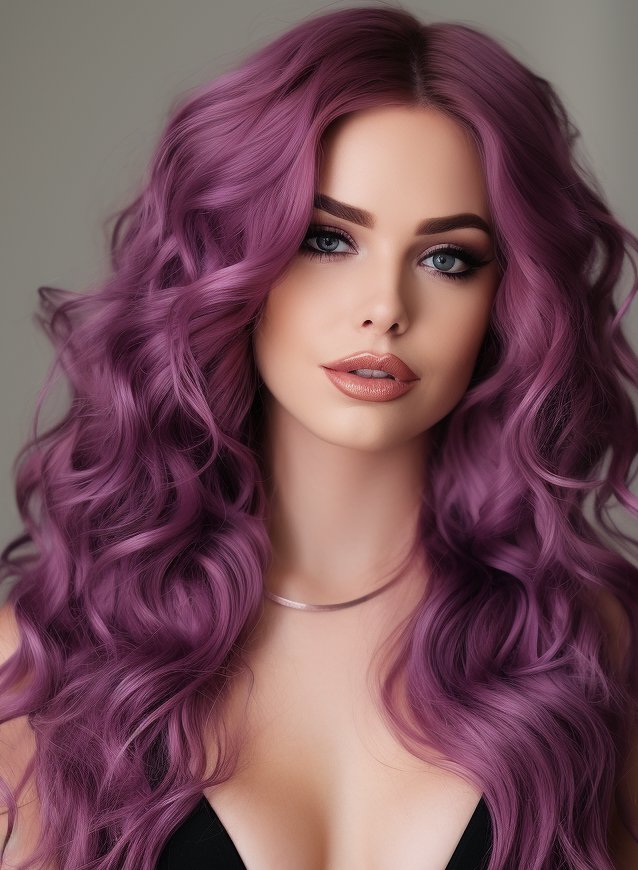Complete Guide to Wig Care and Maintenance
Complete Guide to Wig Care and Maintenance
Master the art of wig care with expert techniques for both synthetic and human hair wigs. Extend your wig's lifespan and maintain that perfect look with our comprehensive 2025 guide.
Whether you're new to wearing wigs or a seasoned wig enthusiast, proper care and maintenance are essential for keeping your investment looking fresh, natural, and long-lasting. This comprehensive guide covers everything you need to know about wig care, from basic cleaning techniques to advanced styling tips that will help you get the most out of your synthetic and human hair wigs.
Understanding Your Wig Type: The Foundation of Proper Care
Before diving into specific care routines, it's crucial to understand the fundamental differences between synthetic and human hair wigs. Each type requires distinct care approaches, and using the wrong methods can significantly reduce your wig's lifespan or damage its appearance.
Synthetic Wigs vs. Human Hair Wigs
| Aspect | Synthetic Wigs | Human Hair Wigs |
|---|---|---|
| Material | Man-made fibers (polyester, acrylic, or modacrylic) | 100% natural human hair |
| Heat Tolerance | Low (max 180°F/82°C for heat-friendly types) | High (up to 400°F/204°C) |
| Washing Frequency | Every 6-8 wears or 1-2 times per week | Every 7-10 wears or 1-2 times per week |
| Styling Flexibility | Limited (pre-styled, holds shape) | High (can be cut, colored, styled) |
| Lifespan | 3-6 months with regular wear | 1-3 years with proper care |
| Cost | $30-$300 | $100-$3000+ |
Essential Wig Care Supplies: Building Your Maintenance Kit
Having the right tools and products is half the battle when it comes to proper wig care. Here's your comprehensive shopping list for maintaining both synthetic and human hair wigs:
🧴 Cleaning Products
- Wig-specific shampoo (separate for synthetic/human hair)
- Wig conditioner
- Leave-in detangling spray
- Wig refresh spray
🪃 Brushing Tools
- Wide-tooth wig comb
- Wig brush (wire or synthetic-specific)
- Detangling brush for wet hair
- Rattail comb for parting
🏠 Storage & Display
- Wig stand or mannequin head
- Wig storage boxes
- Silk or satin wig bags
- T-pin or wig clips
💨 Styling Equipment
- Blow dryer with diffuser (human hair only)
- Heat-protectant spray
- Wig styling products
- Microfiber towels
💡 Pro Tip: Never Use Regular Hair Products!
Regular shampoos, conditioners, and styling products contain ingredients that can damage wig fibers, strip color, or cause buildup. Always invest in products specifically formulated for wigs – your investment will thank you!
How to Wash Your Wigs: Step-by-Step Techniques
Washing Synthetic Wigs
Synthetic wigs require gentle care and cool temperatures to maintain their fiber integrity and style memory. Follow these expert-recommended steps for optimal results:
- Pre-wash Preparation: Gently detangle your wig using a wide-tooth comb, starting from the ends and working upward. Remove any wig accessories or clips.
- Fill Your Basin: Use cool water (never hot!) and add one capful of synthetic wig shampoo. Mix gently to create suds.
- Soak and Cleanse: Submerge the wig completely and let it soak for 5-10 minutes. Gently swish through the water – never rub or scrub the fibers.
- Rinse Thoroughly: Use cool running water to rinse from the cap down to the ends until all shampoo is removed.
- Condition (Optional): Apply wig conditioner to the mid-lengths and ends only, avoiding the cap area. Leave for 2-3 minutes.
- Final Rinse: Rinse again with cool water until all product is removed.
- Gentle Drying: Pat with a microfiber towel – never wring or twist. Place on a wig stand to air dry naturally.

Washing Human Hair Wigs
Human hair wigs can handle slightly more manipulation than synthetic ones, but still require careful handling to prevent tangling and maintain their quality:
- Detangle First: Use a wide-tooth comb or detangling brush to remove all knots, working from ends to roots.
- Secure the Cap: Hold the wig by the cap area to prevent stretching during washing.
- Lukewarm Water Wash: Rinse with lukewarm water from cap to ends, allowing water to flow in the direction of the hair.
- Shampoo Application: Apply human hair wig shampoo to your palms, then gently work through the hair using downward motions.
- Thorough Rinse: Rinse completely with lukewarm water until water runs clear.
- Deep Conditioning: Apply conditioner from mid-length to ends, avoiding the cap. Leave for 3-5 minutes.
- Cool Water Rinse: Final rinse with cool water to seal the hair cuticles and add shine.
- Towel Dry: Gently squeeze excess water with a microfiber towel, then place on a wig stand.
⚠️ Critical Don'ts for Wig Washing
Never use hot water on synthetic wigs – it will permanently damage the fibers. Avoid rubbing, scrubbing, or twisting wet wigs. Don't brush wet synthetic wigs, as this can cause irreversible damage to the fiber structure.
Wig Care Schedule: Timing Your Maintenance Routine
Establishing a regular care routine is essential for maintaining your wig's appearance and extending its lifespan. The frequency depends on how often you wear your wig and your lifestyle:
| Frequency | Synthetic Wigs | Human Hair Wigs |
|---|---|---|
| After Each Wear | Gentle brushing, wig stand storage | Gentle brushing, detangling, wig stand storage |
| Weekly | Deep brushing, refresh spray application | Deep conditioning treatment (if worn frequently) |
| Every 6-8 Wears | Full wash and conditioning routine | Full wash and deep conditioning |
| Monthly | Deep cleaning, professional styling (if needed) | Professional maintenance, trimming if needed |
| Seasonally | Thorough inspection, replacement assessment | Professional deep treatment, color refresh |
Styling and Heat Guidelines: Protecting Your Investment
Synthetic Wig Styling
Most synthetic wigs are designed to maintain their style with minimal effort, but understanding heat limitations is crucial:
🌡️ Heat-Friendly Synthetic Wigs
Maximum temperature: 180°F (82°C). Use heat protectant spray and test on a small section first. Suitable for light curling and straightening.
❄️ Regular Synthetic Wigs
No heat styling! Exposure to heat will permanently damage and singe the fibers. Use curl-enhancing creams and air-drying techniques instead.
✂️ Cutting and Trimming
Always consult a professional wig stylist. Synthetic fibers behave differently than natural hair when cut.
🌀 Alternative Styling
Use foam rollers, flexi-rods, or pin curls for heat-free styling. Set with wig-specific styling products.
Human Hair Wig Styling
Human hair wigs offer maximum styling flexibility but require proper heat protection and technique:
- Heat Styling: Use temperatures up to 400°F (204°C) with heat protectant
- Chemical Processing: Can be colored and permed by professionals
- Daily Styling: Treat like your natural hair with appropriate products
- Professional Services: Regular salon visits for cuts, colors, and treatments
Storage Solutions: Preserving Shape and Quality
Proper storage is often overlooked but plays a crucial role in maintaining your wig's appearance and extending its lifespan:
Daily Storage
- Wig Stands: Always store on a wig stand or mannequin head to maintain shape
- Ventilation: Ensure adequate airflow around stored wigs
- Location: Keep away from direct sunlight, heat sources, and humidity
- Brushing: Gently brush before storage to prevent tangling
Long-term Storage
- Clean First: Always wash and completely dry wigs before long-term storage
- Storage Containers: Use breathable wig boxes or silk/satin bags
- Shape Maintenance: Stuff the cap area with tissue paper to maintain form
- Climate Control: Store in cool, dry places with stable temperature
🏠 Storage Space Optimization
If space is limited, consider collapsible wig stands or wall-mounted wig holders. For travel, invest in a quality wig travel case that maintains shape while protecting from damage.
Troubleshooting Common Wig Problems
Tangling and Matting
Prevention: Regular brushing, proper storage, quality wig products
Solution: Use detangling spray, work from ends upward with wide-tooth comb, consider professional help for severe matting
Loss of Shine and Softness
Causes: Product buildup, over-washing, environmental exposure
Solution: Deep cleansing treatment, wig-specific shine products, proper conditioning routine
Color Fading
Prevention: UV protection, quality storage, gentle cleaning products
Solution: Color-depositing shampoos, professional color refresh, replacement if severely faded
Cap Stretching
Causes: Improper handling when wet, over-stretching during wear
Solution: Professional cap adjustment, replacement if severely stretched
Professional vs. DIY Maintenance: When to Seek Expert Help
While many aspects of wig care can be handled at home, certain situations require professional expertise:
🏠 DIY Maintenance
- Regular washing and conditioning
- Daily brushing and detangling
- Basic styling and touch-ups
- Storage and routine care
👩🔬 Professional Services
- Cutting and major styling changes
- Color processing and highlights
- Cap adjustments and repairs
- Severe damage restoration
Budget-Friendly Wig Care Tips
Proper wig care doesn't have to break the bank. Here are cost-effective strategies for maintaining your wigs:
- DIY Wig Stand: Use a clean glass bottle or foam head as an affordable alternative
- Homemade Detangler: Mix water with a small amount of wig conditioner in a spray bottle
- Fabric Softener Method: For synthetic wigs, use a small amount of fabric softener mixed with water as a conditioning treatment
- Preventive Care: Invest in quality initial care to avoid costly repairs or early replacement
- Rotation System: Own multiple wigs to reduce wear on individual pieces
Frequently Asked Questions
The frequency depends on usage and wig type. Synthetic wigs should be washed every 6-8 wears or 1-2 times per week with regular use. Human hair wigs follow similar guidelines but can handle slightly more frequent washing if needed.




